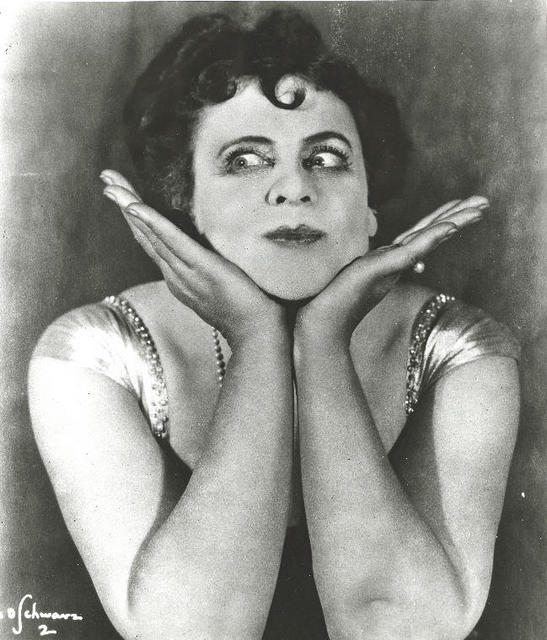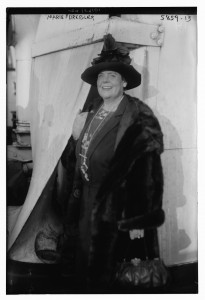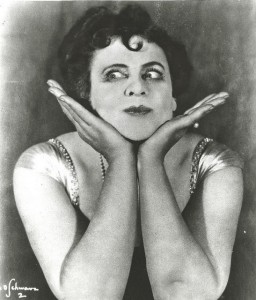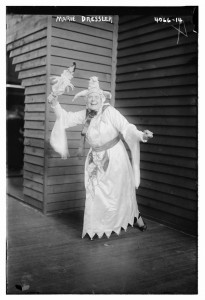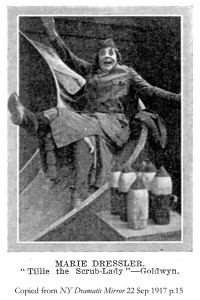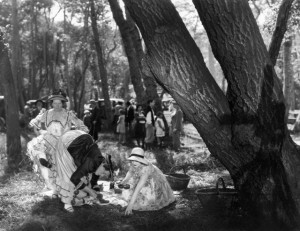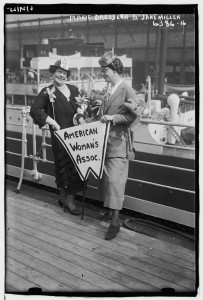Marie Dressler was a top star who died at the height of her popularity. Her career is thoroughly documented, and this synopsis unavoidably recounts the tireless efforts of biographies by Betty Lee and Matthew Kennedy. She remains a comedienne with a loyal following, with a foundation and museum in her birthplace of Cobourg, Ontario. In the context of women behind-the-scenes in early film production, Dressler provides an example of a failed attempt to turn stage and screen fame into an eponymous production company where she had a hand in writing the resulting two-reelers. In the mid-1910s, it was common to turn movie stardom into professional autonomy by creating an eponymous film company. Dressler’s self-produced films were the last before a well-mythologized descent into poverty and reemergence as an MGM early-sound star with the help of loyal friend, screenwriter Frances Marion. Her decline coincided with well-publicized off-screen activities including the World War I bond drive and the 1919 Actors’ Equity strike. Assertions that she was the victim of anti-union blacklisting remain unsubstantiated by her biographers Lee and Kennedy, who conclude instead that she had simply spent too much time off stage and screen, or in lackluster roles.
Dressler’s comic persona crystallized into the character Tillie Blobbs onstage in 1910. A 1915 Moving Picture World review described the effect as, “sort of a reckless elephant with dare-devil instincts consistently foiled by her size and weight” (463). When the play “Tillie’s Nightmare” opened on Broadway, the New York Times raved that Dressler “raised such a ruction as only a very large and very noisy and very clever person can raise without being arrested” (9). A few months earlier in previews, the Chicago Tribune was more skeptical, but still recognized that Tillie was “a harmonious environment for Miss Marie Dressler’s turbulence of face and figure” (7).
The centerpiece became a signature tune for Dressler, especially in her later Actors’ Equity efforts, “Heaven Will Protect the Working Girl.” With the fantastic popularity of “Tillie’s Nightmare” on stage, it became clear that Dressler’s physical comedy would translate well into film slapstick, and she negotiated top-billing in Mack Sennett’s first feature-length comedy at Keystone, Tillie’s Punctured Romance (1914), “supported by” Mabel Normand and Charlie Chaplin, before he began at Mutual. The title supposedly replaced a more generic one as a capitulation to Dressler’s clear identification with the character, said Moving Picture World in 1914 (914). Dressler claimed Sennett wanted a stage star to get his comedies into high-class feature film theatres, and she recalled thinking, first meeting him in Los Angeles: “There’s a man who wants his fare back to New York!” (Dressler 127).
Opening in Chicago’s Loop late in January 1915, Tillie’s Punctured Romance sold about 10,000 tickets a day in its first-run at the 300-seat Star Theater. Kitty Kelly in the Chicago Tribune summarized the “experiment” of a feature comedy as “a howling success… a concentrated encyclopedic collection of all the standard ‘laughs’ in the Keystone repertoire” (10). A second feature, Tillie’s Tomato Surprise (1915) starred Dressler without Keystone connections. Coinciding with a third Dressler feature, Tillie Wakes Up (1917), written by Dressler’s friend Frances Marion, the Dramatic Mirror reported in December 1916 that Dressler and her romantic companion, Jim Dalton, formed the Marie Dressler Motion Picture Corporation (MDMPC) to supply producer-distributor Mutual Film Corporation with a dozen two-reel pictures based on the Tillie character (24). It was the same year that Charlie Chaplin left the Keystone Company for Mutual.
Another deal was announced in August 1917, this time between the MDMPC and Goldwyn Pictures. Filming at first in New Jersey, a Hollywood studio was reportedly leased, according to the Dramatic Mirror of September (20). Without using the character Tillie overtly, the comedies The Scrublady (1917) and Fired (1917) followed the same antics. In the Moving Picture World, more ink was devoted to the company’s business setup than its creative output. Neither of these first two releases were reviewed nor publicized; they were merely listed as “available” for two weeks in January 1918. Dressler is assumed to be the scenarist for these in the absence of published credits. The only known surviving print material of a MDMPC film, a copy of the second reel of The Scrublady, contains no credits.
The production company was subject to litigation, possibly involving a dispute over the originality of Dressler’s scenario for Fired (Kennedy 100). Next in July 1918 was The Agonies of Agnes, which received a brief comment as “horse play which never becomes really laughable” (251). Finally in August, The Cross Red Nurse (1918) was dismissed as “rather forced” (1310). By then, Dressler was putting her effort instead into patriotic wartime promotions, leaving little time for developing new projects. Beauchamp notes that Marion thought the production company was actually a troubling turn in her friend’s career (1997, 79). In that biography, Beauchamp also gives an account of how Marion later seeded Dressler’s late 1920s revival at Metro-Goldwyn-Mayer, crafting roles especially for her in Anna Christie (1930), Min and Bill (1930), Emma (1932), and Dinner at Eight (1933).
In Dressler’s last decade, after Jim Dalton’s death, she sought out the company of women, and her companionship with Claire Dubrey was just shy of openly lesbian, says one contemporary biographer (Lee 185–187). With Marion crafting characters for her, and Adela Rogers St. Johns as biographer, the saving grace of friendships with other women in the entertainment industry was an increasingly dominant motif in Dressler’s private life. Though she refers to Dalton when she remarks in her autobiography that she “loved only one man,” her marriage with her second “husband” was troubled (137). Victoria Sturtevant notes that Dressler had an unhappy and short first marriage as a teenager. In the early 1910s she began to refer to Jim Dalton as her manager and husband although he had not yet obtained a divorce from his first wife. She assumed that his divorce was finalized and believed that their marriage was legitimate. However, in the late 1910s he stole the money Dressler gave him for his divorce and staged a fake marriage. When she discovered the truth, she threw him out. Dalton suffered a stroke and she nursed him until his death. She was forced to allow Dalton’s legal wife to bury him (Sturtevant 130).
As for the foray into screenwriting in her own production company, it was far from her only financial or creative misstep. She said of her legal wrangling over proceeds from Tillie’s Punctured Romance, “the business side of the moving picture business has always been too complicated for me. There are too many middlemen” (Dressler 131). Whatever the source of financial trouble, and despite her professed lack of interest in long-term planning, the production company may nonetheless have simply been a way to delay admitting that Tillie had fallen out of favor with audiences.
See also: Frances Marion, Mabel Normand, Adela Rogers St. Johns

